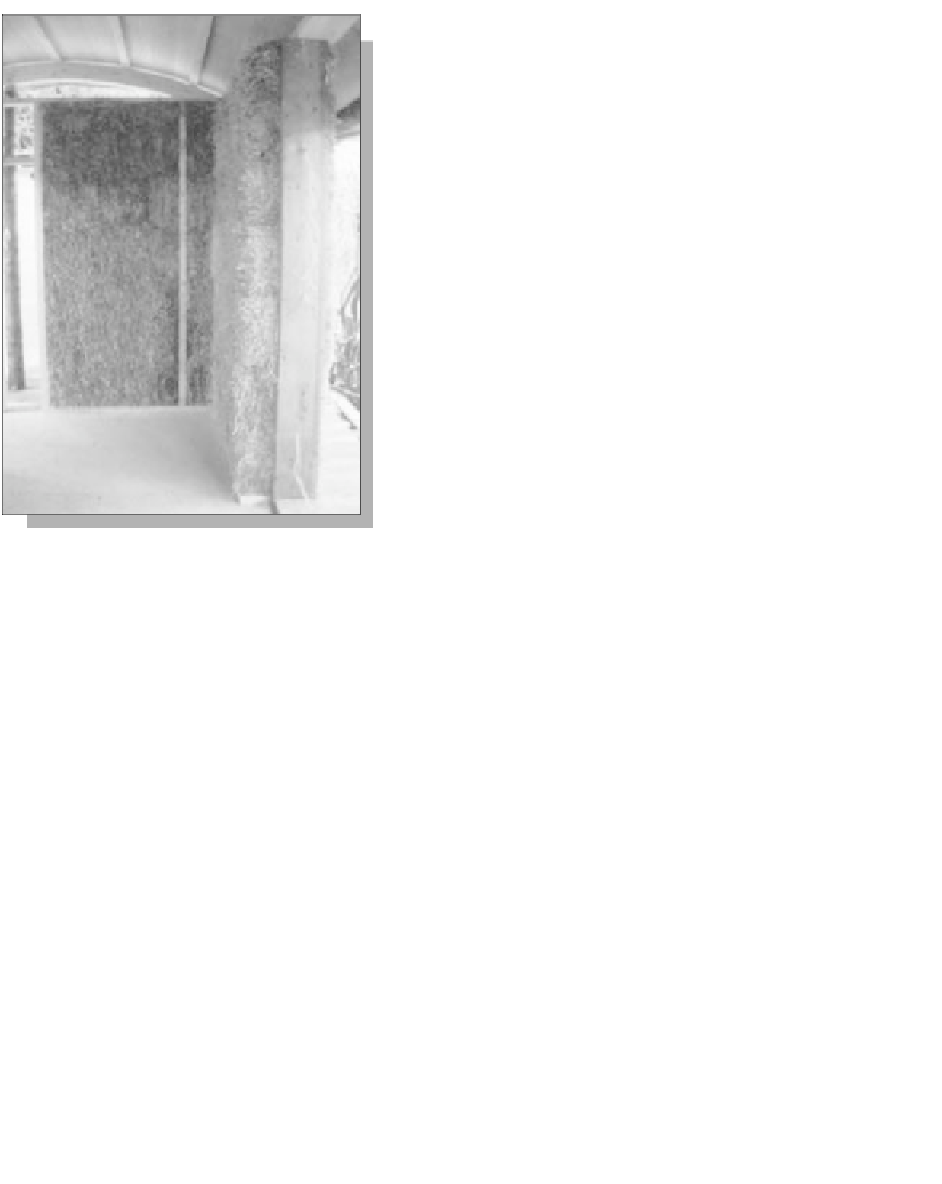Civil Engineering Reference
In-Depth Information
with hydraulic lime render. The walls can be
rendered direct with three or four layers of a
clay-based render, mixed with cow dung
and even hacked straw. It is also possible to
use the same treatment on the inside, giving
a very smooth surface. Rendered straw
structures are non-flammable.
Plain straw bales can be made fire- and
rot-resistant by dipping in a solution of 5 per
cent waterglass, thin runny clay or lime
gruel. On exceptionally exposed sites, ren-
dered surfaces must be protected by an extra
outer skin such as timber panelling.
During the 1980s, when a 75-year-old
school built of straw was demolished in
Nebraska, the straw was undamaged and
fresh enough to be used as cow fodder. Such
relatively unexpected experiences have led
to a renaissance of straw bale building in
both Canada and the USA, and in recent
years straw bale building has begun in
Europe, mainly in France.
Figure 14.17: Straw bale building.
Source: Howard Liddell
Matting
Matting can be produced by binding fibres or stalks together with galvanized
wire or by gluing or by 'pinning' them together. The latter method is used in the
production of linen mats. The flax fibres are beaten into soft strands, then mixed
with waterglass and boron. They are then filtered together on a special brush of
nails to make them into an airy, effective insulating mat of various thicknesses.
Denser felt products and strips for sealing joints are produced in the same way.
Similar products based on hemp-fibre are in the pipeline. Stinging nettles can
probably be treated in the same way.
One traditionally much older building material, reeds, can also be bound
together with galvanized wire. Reed mats are used as thermal insulation and as
reinforcement in concrete walls and prefabricated units. When rendered, the
mats can also be used as false ceilings or a base for infill of party floor construc-
tion.
Strawboards
Straw is laid in a mould with the stalks lying at right angles to the direction of
the board, forming the width of the board. They are then exposed to pressure and

